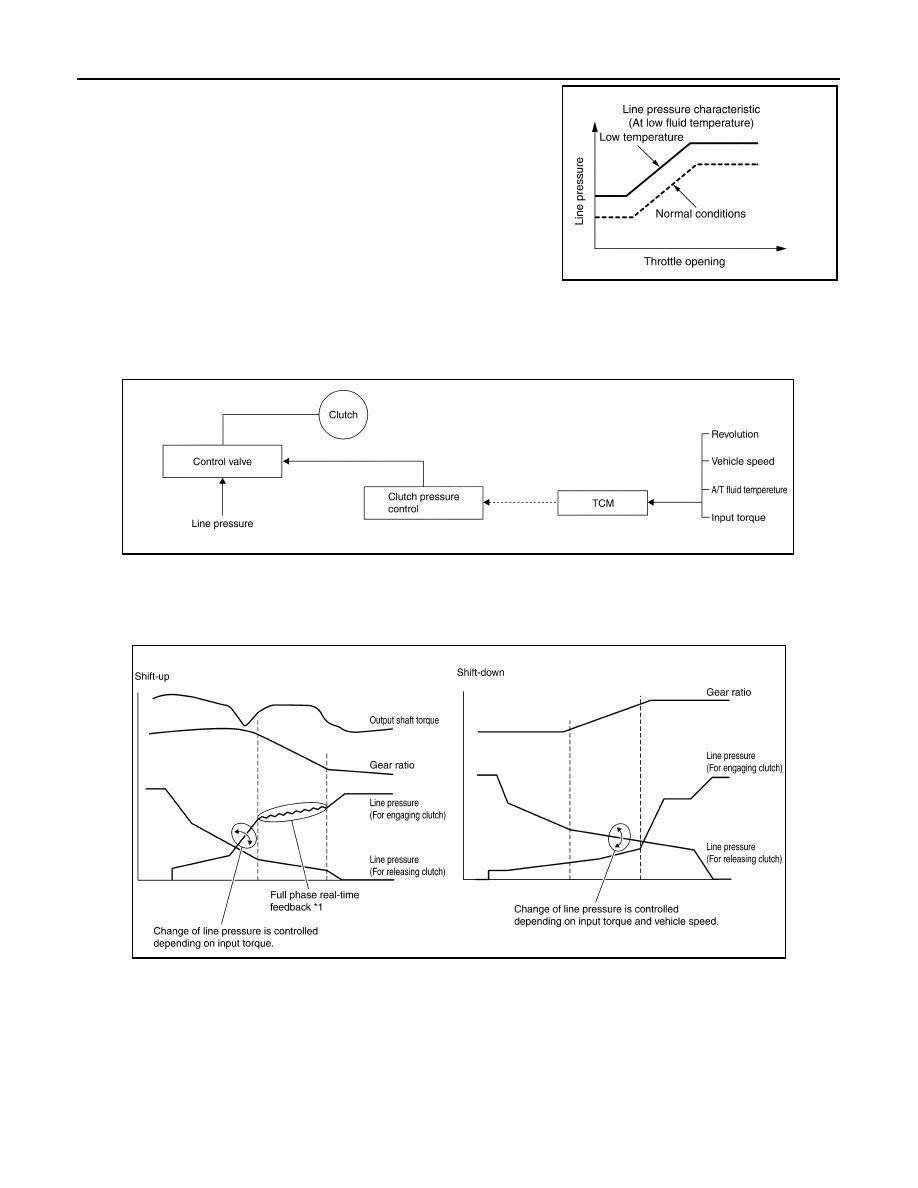Content .. 1346 1347 1348 1349 ..
Infiniti G35 (V35) Sedan. Manual - part 1348

TM-84
< FUNCTION DIAGNOSIS >
[5AT: RE5R05A]
A/T CONTROL SYSTEM
• When the A/T fluid temperature drops below the prescribed tem-
perature, in order to speed up the action of each friction element,
the line pressure is set higher than the normal line pressure char-
acteristic.
SHIFT CONTROL
The clutch pressure control solenoid is controlled by the signals from the switches and sensors. Thus, the
clutch pressure is adjusted to be appropriate to the engine load state and vehicle driving state. It becomes
possible to finely control the clutch hydraulic pressure with high precision and a smoother shift change charac-
teristic is attained.
Shift Change
The clutch is controlled with the optimum timing and oil pressure by the engine speed, engine torque informa-
tion, etc.
Shift Change System Diagram
*1: Full phase real-time feedback control monitors movement of gear ratio at gear change, and controls oil
pressure at real-time to achieve the best gear ratio.
Blipping Control
This system makes transmission clutch engage readily by controlling (synchronizing) engine revolution
according to the (calculation of) engine revolution after shifting down.
• “BLIPPING CONTROL” functions.
- When downshifting by accelerator pedal depression at “D” position.
- When downshifting under the manual mode.
• TCM selects “BLIPPING CONTROL” or “NORMAL SHIFT CONTROL” according to the gear position, the
selector lever position, the engine torque and the speed when accelerating by pedal depression.
PCIA0011E
PCIA0012E
PCIA0013E